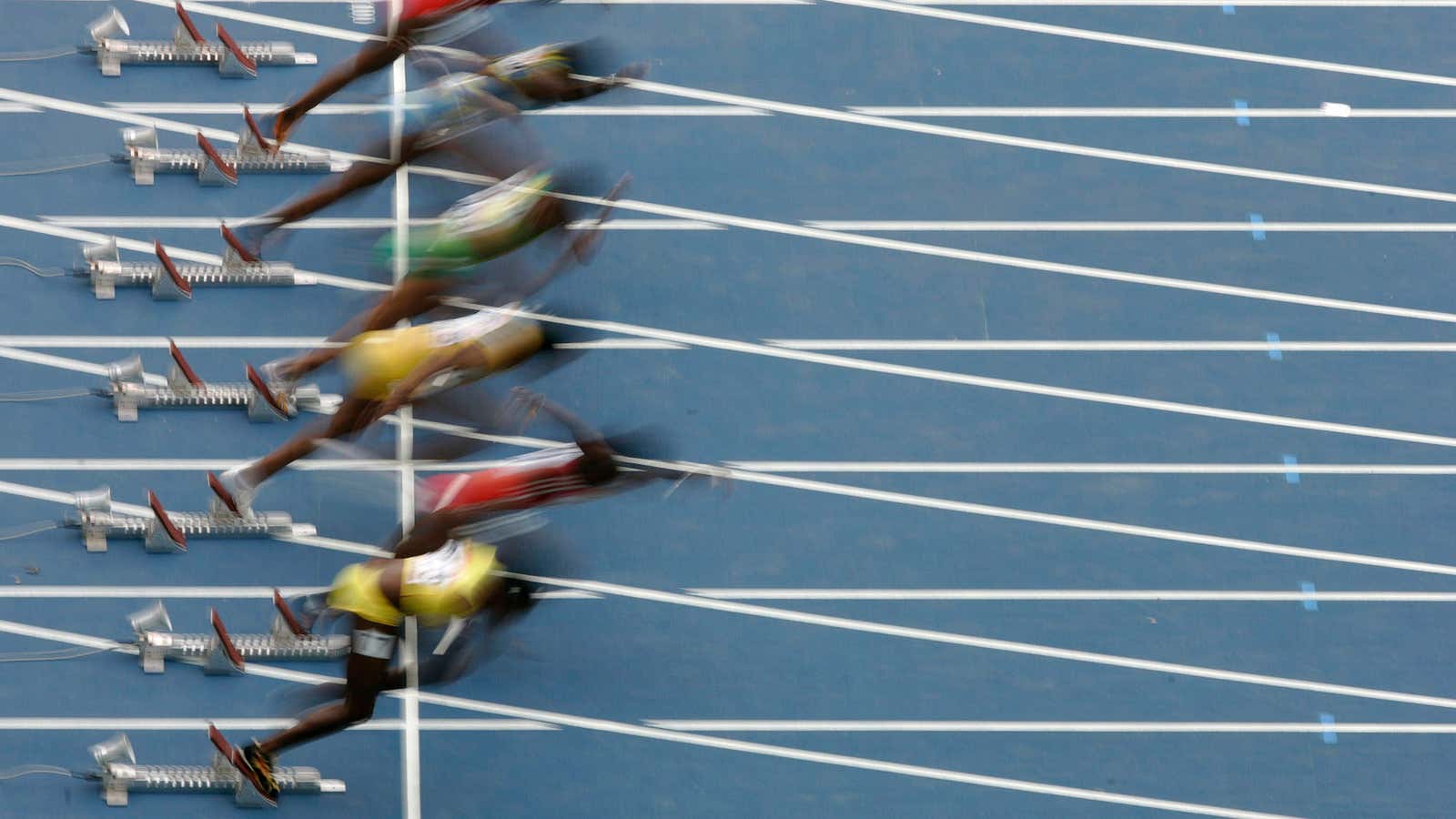Doping in sports is back in the news. The World Anti-Doping Agency (WADA) has found “systematic failures” in drug testing and accuses Russia of bribing officials to cover up positive results, in a report released today, Nov. 9. In the aftermath, WADA’s recommendation is to ban Russia from athletic competition. But what if there were a simple solution to end doping in sports once and for all?
From the Incas chewing coca leaves to ancient Olympians chomping opium, humans have used drugs to enhance performance for millennia. It wasn’t until 1928 that the International Association of Athletics Federations (IAAF) decided to ban doping in sports—a profession where “fairness” matters above most other factors.
But a ban only works if the anti-doping agency can detect performance-enhancing drugs. So, instead of ending doping, all the IAAF managed to do is create a never-ending race: The agency creates a reliable test for a certain performance-enhancing drug. Athletes, in turn, look for new drugs that the agency cannot detect. The agency develops new drug tests. And on it goes.
After decades of cat-and-mouse, athletes found what they must have believed to be the ultimate doping agent: their own blood.
To enhance athletic performance with your own blood, you draw blood and store it in a freezer. Your body compensates by creating more blood. Then, months later, just before a competition, you can re-inject the old blood for a boost. As the red blood cell count goes up, so does an athlete’s ability to absorb oxygen. The more oxygen you grab with each breath, the more energy your body is able to burn and the better you are able to perform.
Although the enhancement is small compared to actual drugs, it can be the difference between a gold medal and a silver medal. Best of all, “extra blood” was never something WADA tested for.
But the anti-doping agency wasn’t going to sit by and be fooled. What it came up with in response might be a solution to stop doping once and for all: an athlete biological passport. The idea is to record some biological traits of an athlete through testing done at regular intervals. The biological passport’s partial implementation—recording blood and steroid levels—began in January 2014.
When all necessary biological traits are finally incorporated, WADA will no longer need to worry about finding new methods to detect a drug. It will only have to detect resulting changes in the body. In the case of blood doping, if the athlete’s normal red-blood-cell count is, say, 47%, but then is found to be 51% after a competition, foul play may have been involved.
WADA is confident that the biological passport could even deter genetic changes—the ultimate, ever-lasting enhancement—which are surely coming next. If an athlete inserts a performance-enhancing gene, it will probably leave detectable changes in the body, that would differ from the athlete’s profile in the biological passport.
Plus, if implemented right, the biological passport might even cut out another source of cheating in high level sporting events: corrupt officials. National anti-doping agencies destroying test samples to hide evidence of doping, as has been alleged in the latest case against Russian authorities, would be a less likely scenario.
